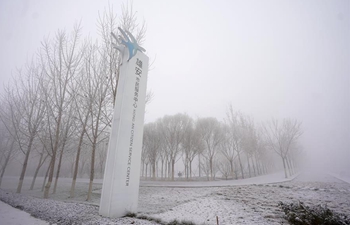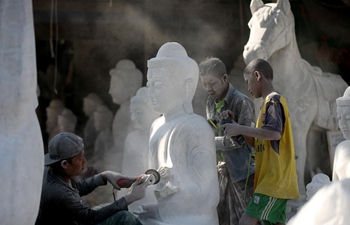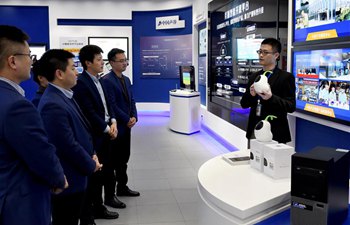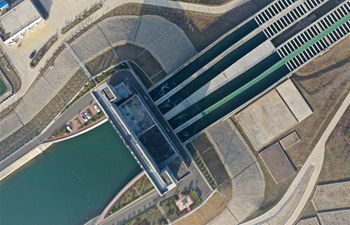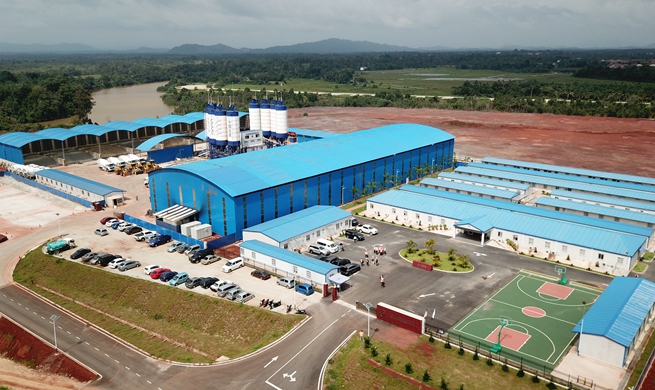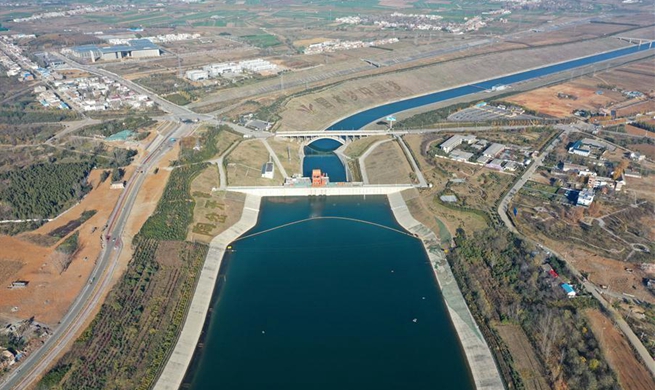TAIYUAN, Dec. 10 (Xinhua) -- Wearing a virtual reality (VR) headset and glasses, Chinese pupil Li Junyi completed his third "visit" to the 1,400-year-old Jinci, the most prominent temple complex in north China's Shanxi Province.
"I didn't need to hire a tour guide or elbow my way through a crowd this time. The experience was fantastic," said the 4th-grade student from Shanxi.
Li's virtual tour of Jinci Temple was made possible by the Shanxi Cultural Relics and Museum Group during a cultural industry fair in the provincial capital Taiyuan, which concluded Tuesday.
The fair attracted more than 1,000 companies from 15 countries and regions, displaying over 10,000 different products. The 5-minute virtual tour attracted more than 300 visitors each day at the fair.
"Camera flashes and even the exhaled breath of tourists can damage cultural relics like sculptures and murals. By using VR technology, we provide a lifelike visiting experience and also protect the relics by reducing the number of tourists," said Guo Yue, a staff member with the company.
In another booth just a few steps away, a showcase displaying a black glazed porcelain cup dating back to the Liao Dynasty (916-1125) attracted many visitors.
"This is a multimedia interactive showcase. We have installed a touchable see-through display screen on its surface, introducing information about the object we are showing," said Sun Xubo with Sinonera Technology, the developer of the showcase.
"From jiggering to drawing, I know every step behind making a porcelain cup. I am impressed by the exquisite ancient skills," said Kong Qingxia, a government official with Hongshan Township, Shanxi Province. Kong plans to apply what she learned at the fair to the cultural relics protection in her hometown.
China is promoting the use of the latest technologies such as artificial intelligence, VR, immersion display and smart guidance at the country's many cultural heritage institutions, allowing heritage resources to reach more people.
The number of museums in China has increased from 349 in 1978 to over 5,000 today, according to statistics released by the National Cultural Heritage Administration in May. Around 1 billion trips are made to the museums each year, and their popularity has been on the rise among domestic tourists.
With the help of 3D printing technology, 10 reproduced Buddha statues are on display in a museum in Taiyuan. The 3D printed statues are among those that were originally stored in the famous Tianlong Mountain Grottoes but were stolen and lost overseas in the 1920s.
In 2014, the Tianlong Mountain Grottoes Museum established a partnership with the University of Chicago and Taiyuan University of Technology to jointly launch a digital restoration project for the Tianlong Mountain Grottoes.
The project has collected three-dimensional data of more than 100 statues from nine countries including the United States, Britain and Japan and has completed the digital restoration of 11 major caves.
"With the help of advanced technologies, we are able to better preserve our valuable culture heritage. Meanwhile, the immersion display can raise public interest in and awareness of heritage protection," said Cui Xiaodong, deputy curator of the museum.
The museum has launched a digital restoration tour of grotto arts from many countries. Next year, it will continue the tour, allowing more people to appreciate the integration of technology and heritage, Cui said.





